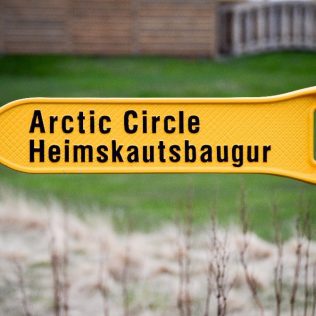Iceland is a fascinating country, often associated with the Arctic Circle due to its proximity. However, a common question arises: Is Iceland in the Arctic Circle? The answer is a bit more complex than a simple yes or no. While the mainland of Iceland is not within the Arctic Circle, there is a part of Iceland that does indeed cross this line: Grímsey Island.
Understanding the Arctic Circle: What and Where Is It?
The Arctic Circle is an imaginary line that circles the Earth at approximately 66.5 degrees north of the equator, marking the boundary of the Arctic region. This circle is significant because it’s where you can experience the midnight sun—24 hours of continuous daylight during the summer solstice—and the polar night, when the sun doesn’t rise at all during the winter solstice. The Arctic Circle passes through several countries, including Norway and Sweden, and it comes closest to the North Pole at its northernmost point.
But did you know? The Arctic Circle isn’t fixed! It slowly shifts due to changes in the Earth’s axial tilt. As of 2024, it sits around 66.3 degrees north. Grímsey Island was once entirely within the Arctic Circle, but by 2031, the line will shift north, leaving only a part of the island within this mystical boundary.
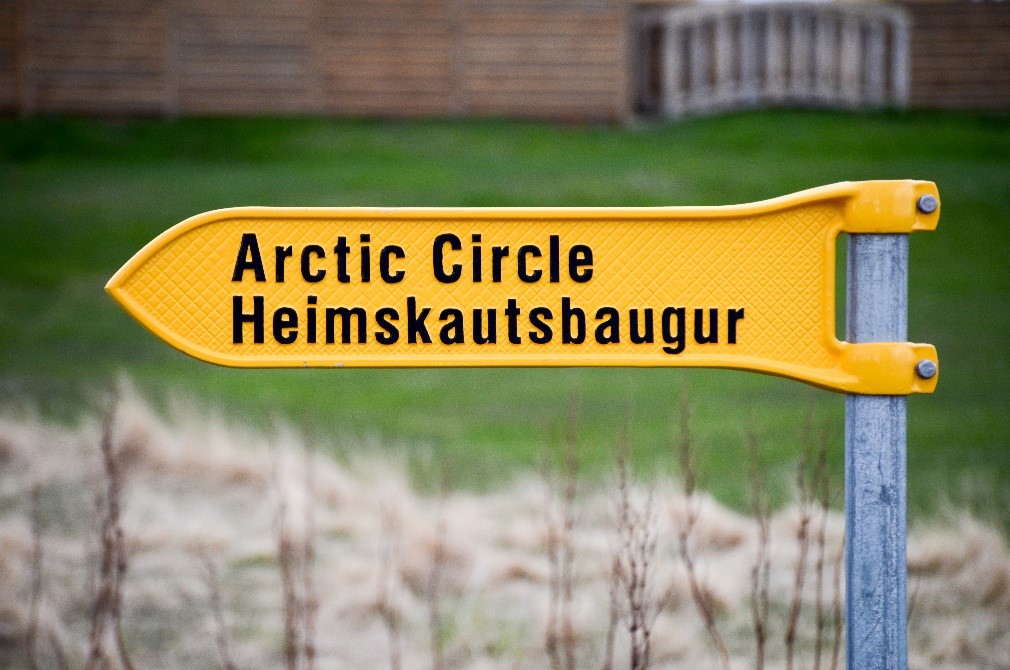
Grímsey Island: Iceland’s Arctic Gem
Grímsey Island is Iceland’s northernmost inhabited spot, sitting at the edge of the Arctic Circle. This small island, part of the municipality of Akureyri, is a hidden gem for nature enthusiasts and those intrigued by the Arctic’s allure. Covering just 5.3 square kilometers, it’s a paradise for bird watching, especially the iconic Arctic tern that migrates here during the summer.
How to Visit Grímsey Island: Your Gateway to the Arctic Circle
If you’re planning a visit to Iceland and want to step into the Arctic Circle, Grímsey Island is your destination. This remote island offers a unique opportunity to cross into the Arctic Circle and experience Iceland’s stunning natural beauty.
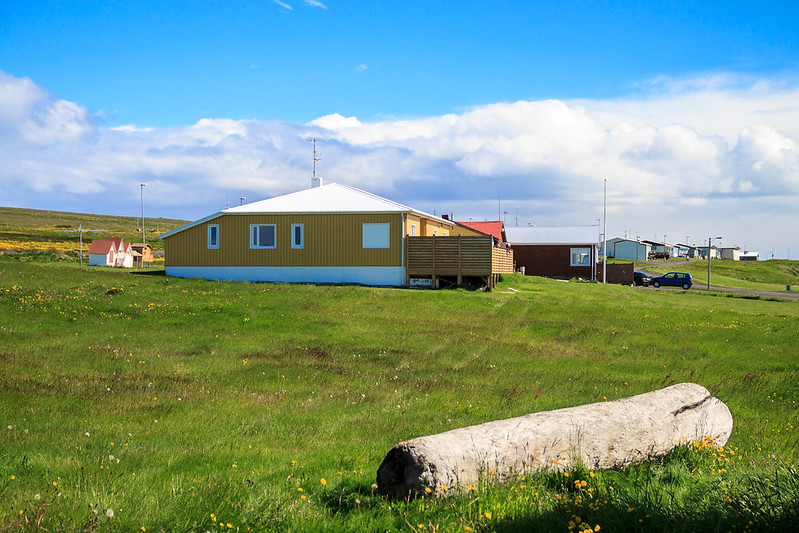
How to get to Grímsey by Car: Route from Reykjavik
Starting your journey in Reykjavik, Iceland’s vibrant capital, you’ll embark on a scenic drive to the town of Dalvík, where you can catch the ferry to Grímsey. The drive from Reykjavik to Dalvík is about 400 kilometers (approximately 250 miles) and typically takes around 5 to 6 hours, depending on road conditions and weather.
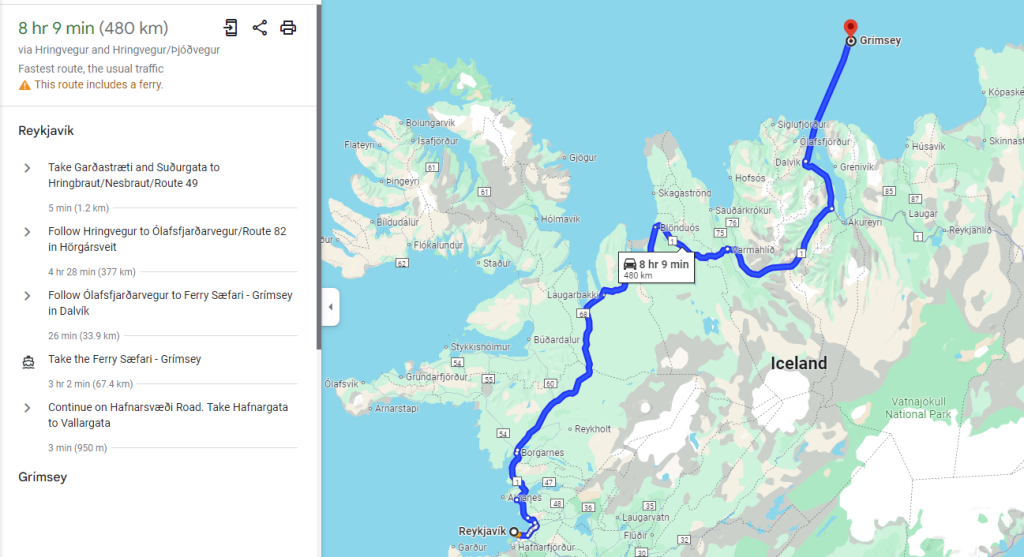
The route takes you along the Ring Road (Route 1), which circles the entire island. Along the way, you’ll pass through some of Iceland’s most breathtaking landscapes, including vast lava fields, towering mountains, and serene fjords. Be sure to make stops in charming towns like Akureyri, known as the “Capital of North Iceland,” and the picturesque Mývatn region, famous for its geothermal activity and unique volcanic features.
Once you reach Dalvík, the ferry terminal is easy to find, and from there, it’s just a 3-hour ferry ride across the North Atlantic to Grímsey.
What Car to Hire: Tips for Driving in Icelandic Weather
When planning your drive from Reykjavik to Dalvík, it’s crucial to choose the right car, especially considering Iceland’s unpredictable weather. The type of car you hire should depend on the season:
- Summer (June to August): During the summer months, most roads are clear, and a standard 2WD vehicle is usually sufficient. However, if you plan to explore more remote areas off the beaten path, a 4WD vehicle can provide added safety and flexibility.
- Winter (November to March): Winter in Iceland can be harsh, with icy roads and heavy snowfall. During this time, it’s highly recommended to rent a 4WD vehicle equipped with winter tires to navigate the challenging conditions safely. Vehicles like SUVs are popular choices as they offer better traction and stability on icy roads.
- Spring (April and May) and Autumn (September, October): These shoulder seasons can bring a mix of weather conditions. A 4WD vehicle is advisable, especially in the northern regions where snow and ice can linger into the spring and start early in the autumn.
With Hertz Iceland, you can choose from a wide range of vehicles, ensuring that you’re well-equipped for Iceland’s diverse driving conditions. Whether you opt for a compact car for easy city driving or a rugged SUV for winter exploration, Hertz Iceland has you covered.

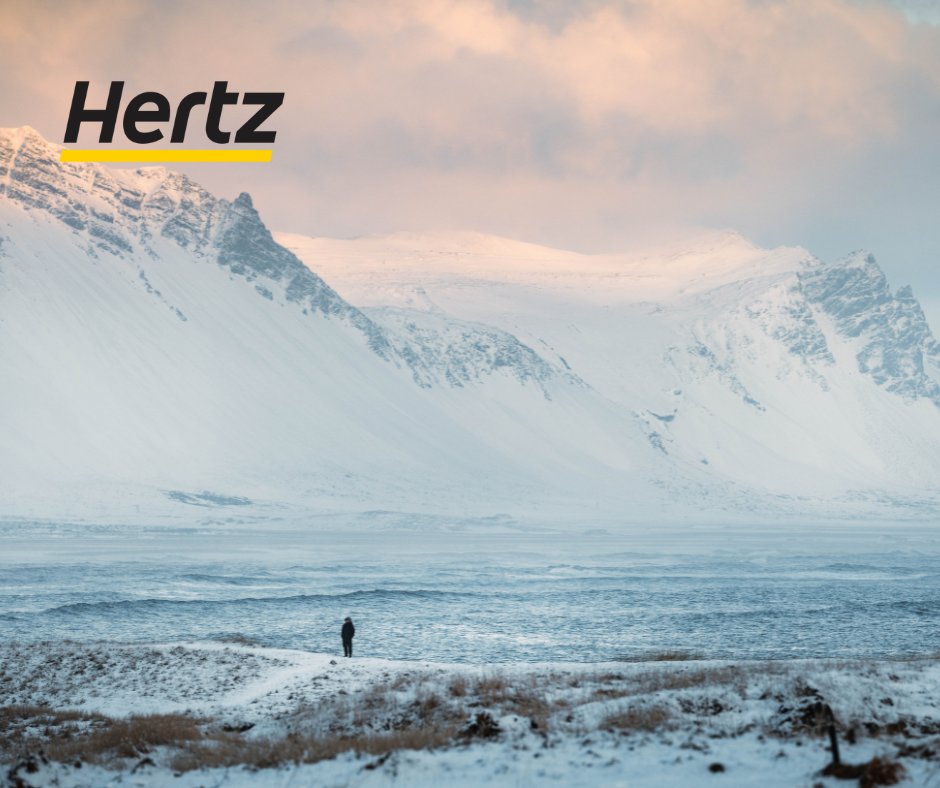
Exploring Grímsey: What to Do Once You Arrive
Arriving on Grímsey, you’ll have a few hours to explore the island, hike its rugged terrain, and capture the stunning birdlife on camera. Don’t miss the chance to relax in the island’s swimming pool, one of the northernmost pools in the world! The pool is a great spot to unwind and take in the unique atmosphere of this Arctic outpost.
If you’re up for a more extended stay, consider spending the night in one of the island’s cozy accommodations. Staying overnight allows you to fully experience the island under the spell of the midnight sun in summer or the northern lights during winter. The peace and solitude of Grímsey, combined with its Arctic charm, make for an unforgettable experience.
A Unique Souvenir: The Arctic Circle Certificate
One of the most exciting parts of visiting Grímsey Island is earning your Arctic Circle Certificate. This special document proves that you have crossed into the Arctic Circle, a fantastic keepsake to show off to friends and family. It’s a memorable way to commemorate your journey to one of the most northern reaches of the Earth’s surface.
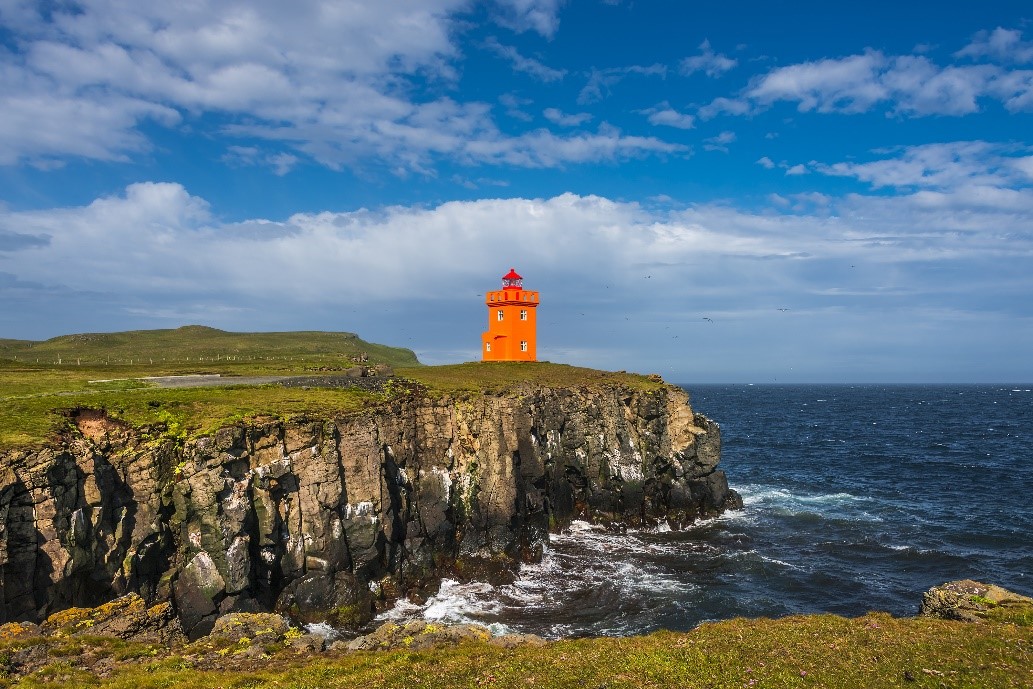
Planning Your Trip to Iceland? Rent a Car with Hertz Iceland
If you’re inspired to explore Iceland’s wonders, including a trip to Grímsey Island and other spectacular sites, consider renting a car with Hertz Iceland. Having your own vehicle gives you the freedom to explore at your own pace, whether you’re venturing to the remote corners of the island or simply enjoying the breathtaking landscapes along the way.
One of the best parts about renting with Hertz Iceland is our convenient location right inside the Keflavík International Airport (KEF) arrival hall. No need to worry about finding transportation to pick up your rental car—we’re there for you as soon as you land, making your travel experience seamless. Plus, our station at KEF Airport is open 24/7, so whether your flight arrives early in the morning or late at night, you can pick up your car whenever it suits you.
Hertz Iceland offers a wide range of rental vehicles to suit your travel needs, from compact cars perfect for city driving to rugged SUVs designed for Iceland’s challenging terrain and ever-changing weather conditions. Whether you’re visiting during the summer for the midnight sun or in winter to chase the northern lights, we have the ideal vehicle for your adventure. Explore our vehicle guide to find the perfect car for your Icelandic journey.

Iceland and the Arctic Circle
While Iceland’s mainland is not within the Arctic Circle, Grímsey Island offers a unique opportunity to cross into this fascinating region. Whether you’re intrigued by the shifting boundaries of the Arctic, passionate about bird watching, or simply want to collect your Arctic Circle Certificate, a visit to Grímsey Island is a must. And remember, Hertz Iceland is here to help you explore all the beauty Iceland has to offer.
So, if you’re planning your Iceland adventure, don’t forget to book your car with Hertz Iceland—your trusted companion on the road to discovering the Arctic Circle and beyond!
